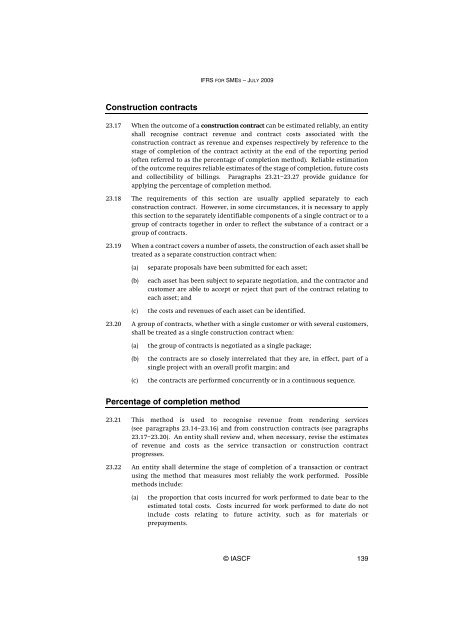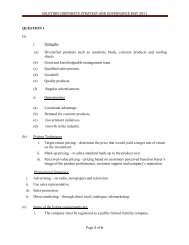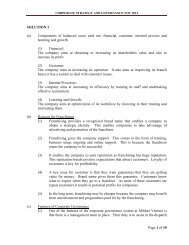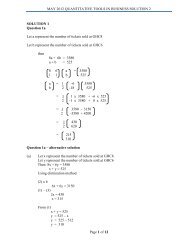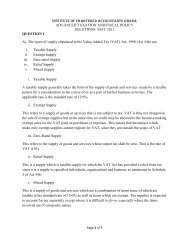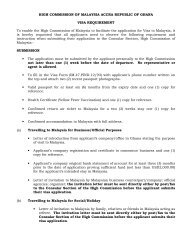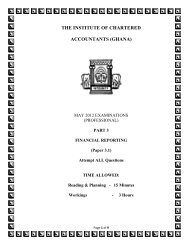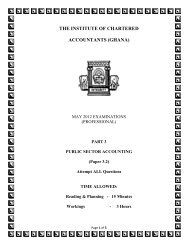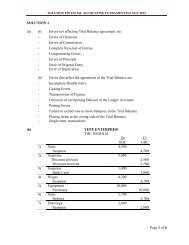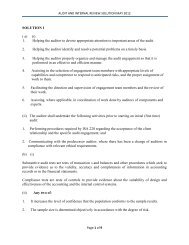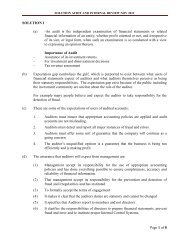(IFRS) for Small and Medium-sized Entities (SMEs)
(IFRS) for Small and Medium-sized Entities (SMEs)
(IFRS) for Small and Medium-sized Entities (SMEs)
Create successful ePaper yourself
Turn your PDF publications into a flip-book with our unique Google optimized e-Paper software.
<strong>IFRS</strong> FOR SMES – JULY 2009Construction contracts23.17 When the outcome of a construction contract can be estimated reliably, an entityshall recognise contract revenue <strong>and</strong> contract costs associated with theconstruction contract as revenue <strong>and</strong> expenses respectively by reference to thestage of completion of the contract activity at the end of the reporting period(often referred to as the percentage of completion method). Reliable estimationof the outcome requires reliable estimates of the stage of completion, future costs<strong>and</strong> collectibility of billings. Paragraphs 23.21–23.27 provide guidance <strong>for</strong>applying the percentage of completion method.23.18 The requirements of this section are usually applied separately to eachconstruction contract. However, in some circumstances, it is necessary to applythis section to the separately identifiable components of a single contract or to agroup of contracts together in order to reflect the substance of a contract or agroup of contracts.23.19 When a contract covers a number of assets, the construction of each asset shall betreated as a separate construction contract when:(a)(b)(c)separate proposals have been submitted <strong>for</strong> each asset;each asset has been subject to separate negotiation, <strong>and</strong> the contractor <strong>and</strong>customer are able to accept or reject that part of the contract relating toeach asset; <strong>and</strong>the costs <strong>and</strong> revenues of each asset can be identified.23.20 A group of contracts, whether with a single customer or with several customers,shall be treated as a single construction contract when:(a)(b)(c)the group of contracts is negotiated as a single package;the contracts are so closely interrelated that they are, in effect, part of asingle project with an overall profit margin; <strong>and</strong>the contracts are per<strong>for</strong>med concurrently or in a continuous sequence.Percentage of completion method23.21 This method is used to recognise revenue from rendering services(see paragraphs 23.14–23.16) <strong>and</strong> from construction contracts (see paragraphs23.17–23.20). An entity shall review <strong>and</strong>, when necessary, revise the estimatesof revenue <strong>and</strong> costs as the service transaction or construction contractprogresses.23.22 An entity shall determine the stage of completion of a transaction or contractusing the method that measures most reliably the work per<strong>for</strong>med. Possiblemethods include:(a)the proportion that costs incurred <strong>for</strong> work per<strong>for</strong>med to date bear to theestimated total costs. Costs incurred <strong>for</strong> work per<strong>for</strong>med to date do notinclude costs relating to future activity, such as <strong>for</strong> materials orprepayments.© IASCF 139


